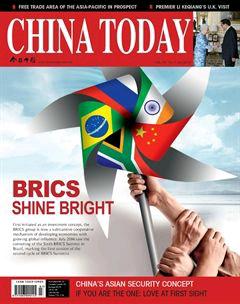Senior Savvy
By+staff+reporter+XING+WEN

THE Chinese word dama, refer- ring to elderly women, first attracted world attention in early 2013 when it appeared in a spate of financial news in the Western press. The word is soon expected to make its way into the Oxford English Dictionary. In November 2013, Julie Kleeman, project manager for Bilingual Dictionaries with Oxford University Press, revealed how “dama” had come to their attention due to its influence.
Investing in Enhanced Later Years
Dama literally means “big mom,”and doesnt have an accurate English equivalent, The Wall Street Journal first used the term to refer to bargain-hunting elder women who “keep an eagle eye on gold prices in jewelry shops.” Their penchant for gold ensued from the slump in gold prices on the global market in midApril 2013. The price of gold fell from US $1,550 per ounce to US $1,321 per ounce, triggering a craze in gold purchases in China. The primary individual investors were elderly women, who swept jewelry stores across the nation, including Hong Kong and Macao. With stunning spending prowess, they even made waves on world financial markets and drew the attention of global media.
On April 26, 2013, driven by massive sales, gold prices returned to US $1,462 per ounce, the largest one-day increase that year. Gold prices then held steady for some time after that. But the rise and fall of gold prices throughout the rest of the year did not stop the craze for gold.
Statistics from the China Gold Association reveal that domestic gold demand hit a record 385.5 metric tons in the second quarter of 2013. With the gold price rising sharply from August 2013, investors and analysts attributed the driving force to Chinas gold demand. In a sense, Chinese dama were influencing the world gold market.
As a matter of fact, this gold-buying frenzy swept across not only China, but many other countries as well. In the few weeks after gold prices dropped in April 2013, jewelry stores in New Delhi, India, witnessed a spike in sales of gold assets including accessories, coins and bullion. In the United States, the U.S. Mint sold more gold coins in April 2013 than in February and March combined. Gold sales in the U.K. in April 2013 were more than 150 percent higher than the previous month, according to the Royal Mint.
Nevertheless, Chinese dama was the most remarkable group among investors worldwide. What drove these retirees to pour their money into gold with such enthusiasm? First, in traditional Chinese concepts gold is deemed a treasure that will never devalue. Past or present, gold has always been the most ideal heirloom to pass down to later generations. The most recent decade-long gold bull market has especially increased investor confidence. Gold bars, coins and even jewelry, which are not highly regarded by professional investors, are all considered as ideal by the Chinese general public. Second, gold is a must for bride price and dowry in Chinese marriage customs. The damas conviction that gold articles make perfect gifts for their daughters or daughters-in-law also stirred their spending sprees. They therefore saw the fall in gold prices as an opportunity to snap up underpriced assets.

